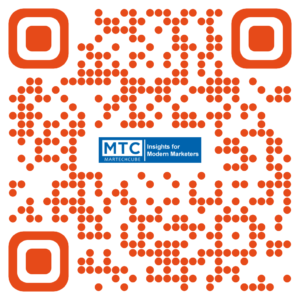Hello Anna, We are delighted to have you on Martech Cube! Could you share with us your background and your journey that led you to become President and CEO of Out of Home Advertising Association of America?
My journey into OOH stems from a deep-rooted passion for innovative media. I’ve always believed in the power of dynamic, data-driven advertising. Leading OAAA allows me to bring that digital-first mindset to an industry that’s not only seeing record-breaking growth but is transforming itself through technology, creativity, and versatility.
With your experience at the Interactive Advertising Bureau, what knowledge have you applied to the out of home advertising industry, particularly regarding data measurement and audience targeting?
From the IAB, I learned the critical importance of data and transparency in building trust with advertisers. In OOH, we’ve applied these principles to audience targeting, enhancing our ability to measure campaign effectiveness. Integrating data and digital technologies into OOH makes the medium as precise and flexible as online channels, especially now with digital OOH’s integration into platforms like Open Direct. This shift enables advertisers to deploy highly targeted, location-based campaigns that resonate with audiences at pivotal moments, maximizing impact and ROI.
There has been record-breaking evolution in the landscape of OOH. Could you elaborate on specific factors that contributed to the sustained momentum in advertising?
A combination of factors has driven this momentum. Our recent research reports highlight how incremental budget reallocations into OOH yield significant media plan ROI improvement in sales and brand metric scores, as brands recognize the strength of location-based engagement. Additionally, digital OOH is reshaping the landscape by offering dynamic capabilities that traditional formats couldn’t achieve. Together, these factors have led to a record-breaking first half in 2024, with both digital and classic OOH formats thriving in today’s fragmented advertising landscape.
Could you explain how digital OOH has transformed the outlook on advertising and what features and capabilities have made it a preferred choice for advertisers?
Digital OOH has redefined OOH’s reach, offering real-time flexibility, integration with digital buying platforms, and robust data insights that support audience targeting. Its capabilities to display timely, contextually relevant content allow brands to communicate messages that are as agile and data-driven as any digital medium. This flexibility makes digital OOH a strategic choice for advertisers who want to leverage high-impact, dynamic messaging.
What strategies do you believe make OOH advertising particularly effective in reaching younger and multicultural audiences, and how do you target and resonate with them with political ad spending?
OOH is intrinsically part of people’s daily lives, making it especially impactful in reaching younger and diverse demographics. While OOH advertising is rated as highly favorable by consumers, younger and multicultural audiences rate it the highest. For political advertisers, this means they can meet audiences where they live, work, and socialize with targeted, contextually relevant messaging. Younger, multicultural audiences appreciate brands—and candidates—that communicate directly and authentically, and OOH’s expansive reach across cities and transit hubs resonates powerfully with these voters.
We’ve seen a surge in tech and direct-to-consumer brands adopting OOH strategies. What do you think are the key reasons for this shift, and how are you supporting these brands in their endeavors?
Tech and direct-to-consumer brands value OOH for its ability to build trust and drive immediate impact. These brands recognize that OOH offers a unique channel for mass reach, which digital channels alone can’t replicate We support these brands by delivering enhanced targeting, robust campaign measurement tools, and insights that demonstrate OOH’s role in the customer journey, helping them optimize campaigns for maximum ROI.
How do you interpret the growth of OOH advertising in sectors like transit and automotive as indicators of broader economic health?
Growth in sectors like transit and automotive reflects strong consumer confidence and mobility—two important indicators of a healthy economy. As people travel more frequently and return-to-office commuting continues to increase, brands find OOH in these sectors to be ideal for capturing attention and reinforcing brand messages. It’s a virtuous cycle: economic strength drives mobility, which increases the demand and efficacy of OOH placements across transit and automotive channels.
What emerging technologies or trends do you think will further drive the growth of digital OOH? How is the OAAA positioning itself to support these developments?
Flexibility and immediacy are key value propositions of digital OOH. As AI, automation, and programmatic capabilities continue to evolve, we see these technologies playing a larger role in digital OOH. Innovations like real-time data integration enable hyper-targeted campaigns that deliver messages relevant to the audience at that exact moment and location. The OAAA is committed to championing these advancements, particularly by collaborating with industry leaders to refine standards that streamline OOH’s integration into the broader digital advertising ecosystem.
Would you like to convey any specific message to our readers when it comes to the evolution of the OOH advertising landscape? And in what ways does this evolution reflect the broader strength of the economy?
OOH’s evolution mirrors the economy’s resilience and adaptability. As brands look for trusted, high-impact advertising channels, OOH has proven itself to be not just relevant but essential, with digital transformation unlocking new opportunities for growth. This medium remains at the forefront, bridging digital and physical worlds and capturing the consumer’s attention where it counts most.
Would you like to give any advice to brands on effectively leveraging location-based targeting to maximize their campaign impact?
Location-based targeting is invaluable for maximizing the impact of campaigns. My advice is to leverage data insights to understand the consumer journey—where and when they’ll most likely engage with your message. With tools available today, brands can fine-tune their campaigns to align with audience behaviors, delivering messages that not only reach but also resonate with consumers at the right moment and place.
Advice from the author : Out of home advertising has never been more versatile or impactful. For brands looking to maximize campaign effectiveness, my advice is simple: leverage the unique strengths of location-based targeting. Today’s tools allow us to meet consumers exactly where they are, at the right time, with a message that’s relevant and resonant. It’s this ability to be present in the real world, with dynamic, data-driven campaigns, that makes OOH an irreplaceable part of the modern media mix.
For more expert articles and industry updates, follow Martech News

Anna Bager, President and CEO of OAAA
Anna Bager, a seasoned media industry veteran, is the president and CEO of the Out of Home Advertising Association of America (OAAA), the national trade association that represents the out of home (OOH) advertising industry. Bager is spearheading the OOH industry’s transformation into one of the most exciting media platforms for brands today, with a focus on tech innovation, ease of buying and integration with other mediums. Prior to joining OAAA, Bager was executive vice president of industry initiatives at IAB, leading all digital, mobile, video, audio, and data industry initiatives as well as all thought leadership, which included the Digital Content NewFronts. She has been named one of the 30 most powerful women in mobile advertising by Business Insider and one of the top women in media by Folio magazine and Cynopsis Media. LinkedIn.



